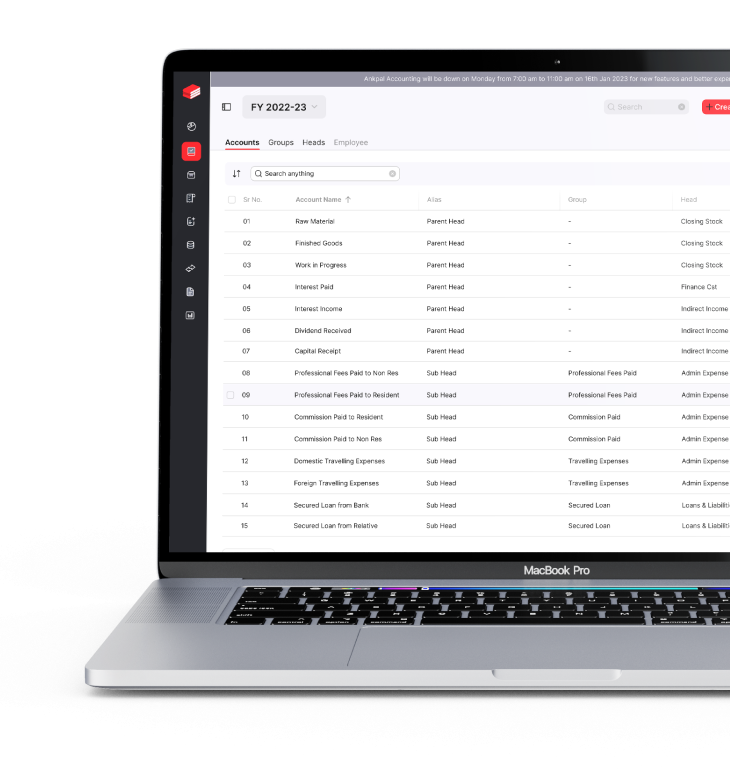
The Goods and Services Tax (GST) was introduced in India in July 2017 with the promise of revolutionizing the nation's taxation system. Fast forward to today, and GST has indeed transformed the way taxes are levied, collected, and administered in the country. However, the GST story is far from over.
This blog aims to dive into the future of the tax system in India, exploring key areas of development and innovation. We will also understand how technology, including cloud accounting software, will play a pivotal role in shaping the next chapter of GST.
Making Taxation Transparent and Fair
One of the primary objectives of GST has always been to simplify the tax structure in India. GST has already introduced the concept of 'One Nation, One Tax.' This concept is expected to be reinforced, possibly with reduced tax slabs and reduced compliance burdens for small and medium-sized businesses. The government's focus will likely be on enhancing the ease of doing business.
Leveraging Technology for Efficient Tax Administration
The future of the Indian tax system undoubtedly involves a heavy reliance on technology. As the tax base expands and more transactions come under the GST ambit, manual tax administration becomes impractical. This is where cloud accounting software and other technology solutions come into play.
An accounting software in India can automate various tax-related tasks, such as generating invoices, calculating tax liabilities, and facilitating the filing of returns. Moreover, these solutions can provide real-time insights into financial transactions, helping businesses make informed decisions.
The government, too, can benefit from technology. Using data analytics and artificial intelligence, tax authorities can better identify tax evaders and streamline the audit process. This not only ensures that businesses pay their fair share of taxes but also reduces the compliance burden for honest taxpayers.
GST on Petroleum & Alcohol
Currently, petroleum and alcohol are outside the purview of GST. This exclusion creates complexities in the tax structure and affects the competitiveness of various industries. Bringing petroleum and alcohol into the GST framework can lead to a more uniform tax structure and reduce price volatility. It will also enhance transparency and simplify compliance. However, this transition will require careful planning and coordination among states and the central government.
Expanding the Tax Base
One of the challenges GST has faced is the narrow tax base. The next chapter of GST will focus on widening the tax base. Identification of tax evaders and increased compliance can be achieved by implementing a complete e-invoicing system and real-time reporting tools. Additionally, efforts can be made to include more industries, such as energy and real estate, in the GST system, thereby expanding the tax base and easing the load on current taxpayers.
Dealing with the Issues of Input Tax Credits
The input tax credit (ITC) mechanism is a fundamental feature of GST, allowing businesses to claim credit for taxes paid on inputs. However, the ITC system has faced challenges, including issues related to fraudulent claims and delayed refunds.
In the future, we can expect improvements in the ITC system to ensure that legitimate claims are processed promptly, while fraudulent activities are curbed effectively. Technology, especially blockchain, can be used to create a transparent and tamper-proof ledger of transactions, enhancing the credibility of the ITC process.
Increasing Tax Rate Uniformity
Another aspect of GST's evolution could involve a further harmonization of tax rates. Currently, GST has multiple tax slabs, with varying rates for different goods and services. While this was implemented to ensure that essential items remain affordable, it has led to complexities in classification and disputes.
In the future, the government may consider rationalizing tax rates, reducing the number of slabs, and moving towards a simpler, flatter rate structure. This would not only simplify compliance but also contribute to the ease of doing business.
Conclusion
The future of the tax system in India is poised for exciting developments. GST, which has already ushered in significant changes, is set to evolve further, with a focus on simplification, fairness, and efficiency. Leveraging advanced technology of the best accounting software in India will be a driving force behind this transformation.








